From The Elder Scrolls to the US Secret Service: where videogame trees come from
The forestry in Star Wars: The Force Awakens, PUBG, The Witcher 3, and more share the same roots.

During the climax of Star Wars: The Force Awakens, the Millennium Falcon crashes through a dense pine forest and skirts toward the edge of an icy cliffside. The trees splinter and pancake as the space jalopy slides to a halt and our heroes emerge unscathed, leaving a shower of splinters and snow in their wake.
But the trees are not what they seem. The forests in The Force Awakens, PlayerUnknown’s Battlegrounds, and an episode of Sesame Street are all hiding something. They’re family.
A significant amount of Mother Nature as represented in games and film starts life at SpeedTree, a small middleware company out of Lexington, South Carolina. Stranger still is that co-founder Chris King credits Bethesda Game Studios director Todd Howard for the company's success and the eventual deforestation of the Star Wars pines.
Todd Howard and the timber in The Elder Scrolls IV: Oblivion are also indirectly responsible for the alien forests on Pandora in James Cameron’s Avatar. You can blame Howard for the best trees in videogames and even in a rival series, The Witcher 3, with its vast windblown forests. You can also blame him for 3D models of the White House and surrounding shrubbery, likely tossed around the US Secret Service’s network to this day.
You can allegedly blame him for CG pubic hair in 50 Shades of Grey (but don’t, King is totally unaware if SpeedTree's software was used as a dynamic genital hair generator. There are better solutions, I’m told. Still, it’s enough ambiguity for hope).
But Todd Howard didn’t make the trees or the alleged pubes or the technology behind them. Howard just gave a small company a big job that helped it keep pace in an industry overgrown with new possibilities.
A seed is planted
SpeedTree is a middleware solution for videogame developers and, more recently, filmmakers who need to make realistic trees en masse, quickly. That doesn’t mean SpeedTree is as simple as a copy and paste engine, or that it spits out photorealistic trees within perfectly simulated ecosystems. It’s easier to think of SpeedTree as more of a specialized tree canvas, a tool used to generate whole forests of trees that look similar but aren’t carbon copies of one another.
Keep up to date with the most important stories and the best deals, as picked by the PC Gamer team.
SpeedTree’s tools also include massive libraries of textures for rendering vegetation, and animation tools that simulate wind moving through branches and leaves. Beyond the time and energy saved making so many trees, SpeedTree’s vegetation is also designed to conserve as many system resources as possible.
For a simple understanding of how it works, the story of their success, and where SpeedTree is being used today, I talked to King over the phone and through a few scattered email exchanges. He’s a bright, generous character, the kind of person that blends a simple answer into an extended anecdote before coming full circle into a question about me. I get the impression the trees are in kind hands.
“It’s all procedural, meaning we use curves and numbers to input into an algorithm that will generate this tree, and as you change those curves and numbers so changes the tree,” King tells me. “But once you get a definition, you can just hit randomize, one button, and it’ll make a tree that looks similar to the last, but not exactly like it. And you keep hitting randomize and it’ll keep hitting these different random variation, so you can populate a unique forest with trees very quickly.”
But it’s important to clear up a common fallacy, he says. “It's a misconception that Speedtree generates these procedural trees on the fly, when in fact, it is an offline procedural tool. The procedural part is there, but it's just a tool that the artist uses to create the shape.”
Simply put, every time you play The Witcher 3, SpeedTree isn’t procedurally generating a new forest. While a game is in development, artists, level designers, and programmers work together to generate a wholly unique forest using SpeedTree’s procedural tools, then touch up and arrange the final result by hand. Once the trees are in place, SpeedTree is also capable of handling “all the loading, culling, level-of-detail, lighting, and wind effects for entire forests” in real-time.

Without the ability to summon a forest of wholly unique trees at will and render them in a live environment, developers have to build their forests entirely from scratch. This can be done by spending endless hours making small tweaks to branch structure from the same starting model, or by building an in-house solution to generate their own trees – albeit likely one with fewer features. Now, when peering out into the verdant, swaying canopies of Toussaint, the time saved and focused elsewhere is plain to see.
Before setting the stage for Geralt, SpeedTree was a loose assembly of good ideas without testimony. Around the turn of the millennium, videogames with massive forests of distinct timber weren’t a common technical ambition, often reigned in by console hardware. For the most part, they were all done by hand, but off the tail of The Elder Scrolls III: Morrowind—whose development predates SpeedTree and itself contains many-a-thicket—Bethesda likely wasn’t ready to create a larger space with more realistic trees capable of running on modern PCs and emerging console hardware. They would need help, and that help was just sprouting.
Counting rings
Unlike most modern middleware and niche software companies, SpeedTree’s origins aren’t the result of surgical, chartered market research and Silicon Valley capital juicing. King inadvertently started SpeedTree with co-founder Michael Sechrest, the result of modest ambitions steered by restlessness and passion.
Sechrest and King met as graduate students in the Computer Engineering department at the University of South Carolina in the late 90s. “We were deeply involved with real-time visualization on those huge old Silicon Graphics Unix systems, doing visualizations for the Office of Naval Research and the Department of Energy.”
Coinciding with the release of the original Nvidia GeForce GPU in 1999, King and Sechrest wanted to start a business and bring their experience creating detailed visualizations to the PC, which was finally capable of rendering their work in real time. The pair formed Interactive Data Visualization (IDV), Inc., which King considers “A great name for a company that does engineering visualizations, not so great for vegetation in videogames and films!”
Here's what a modern SpeedTree tech demo looks like in UE4.
By 2001, the two found steady business creating pre-rendered 3D visuals and animations for a handful of companies, building architectural renders and flyovers day after day. It was good work, but rendering trees for video and stills didn’t challenge their programming skills in the same way videogames would. For King and Sechrest, it was one thing to model a scene and let a powerful computer render it overnight; and another to generate a forest and render it live in the same environment as a little Geralt and hundreds of invisible systems without setting the average household PC on fire.
But during a discussion about the creation of a particular flyover, the client and lead architect was very particular about the trees, requesting that each species be recognizable, a specific height, and to appear wind-blown.
Without software capable of achieving such effects, King and Sechrest made their own, which ended up as the very first version of SpeedTree. “It consisted of a very rudimentary version of the SpeedTree Modeler and a small 3ds Max plug-in,” King says, “It worked well enough. In 2002, we released it as SpeedTreeMAX.”
More than 40,000 people downloaded the demo, including Todd Howard of Bethesda.
Chris King
It was a useful tool for creating more detailed trees, and in creating a new program entirely, their coding know-how was stretched a bit. In time, King and Sechrest saw an opportunity in SpeedTreeMAX. If properly recycled, the two wondered if the SpeedTree Modeler could be used to make assets for videogames, and if so, whether or not anyone would need them.
To check, they posted an article on OpenGL.org to introduce developers to SpeedTree’s tech and gauge interest in a version that produces trees for real-time rendering engines. In a stroke of luck, Sebastien Domine of Nvidia read the article and downloaded the included demo, which demonstrated how SpeedTree could be used in a real-time setting. Domine was impressed by the technology, but he also figured a real-time SpeedTree would be an excellent promotional tool for a new Nvidia GPU. He contacted King and Sechrest, they struck a deal, and they started work on SpeedTree’s first true real-time demo.
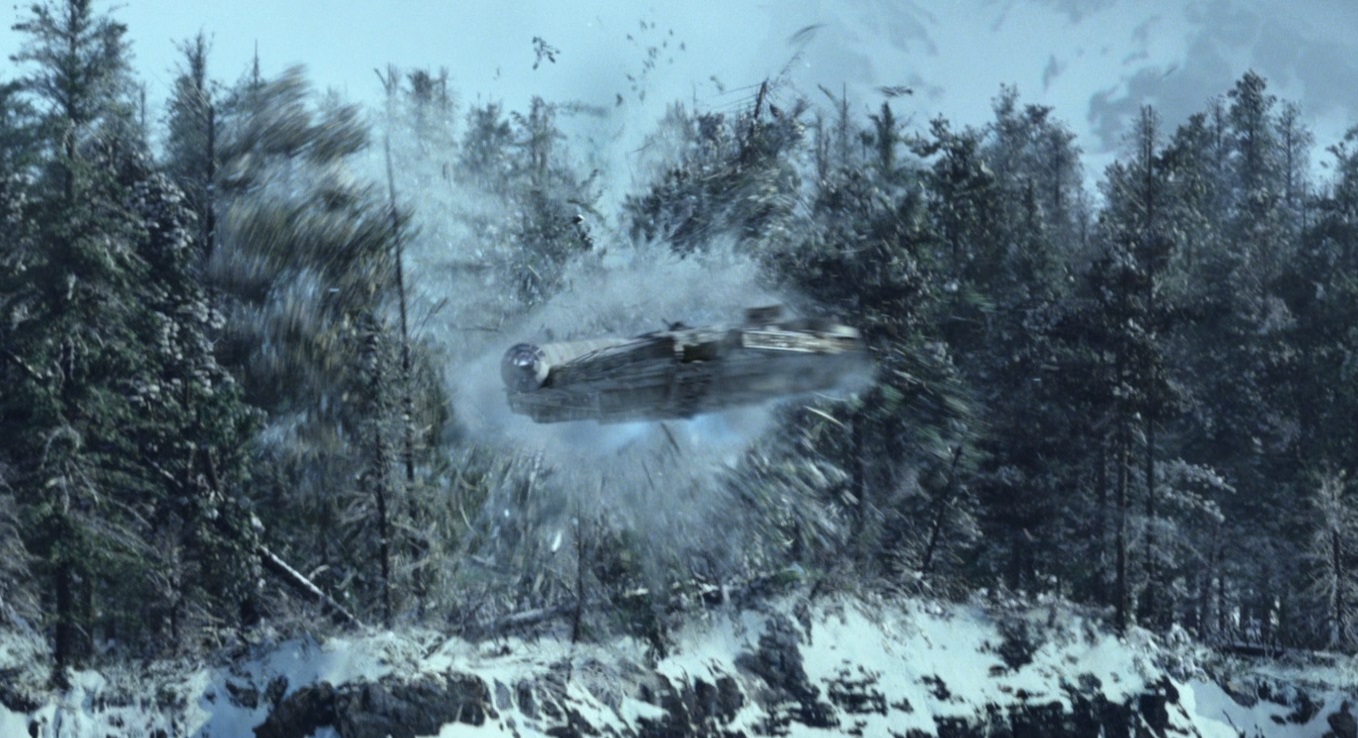
In true videogame form, the demo showed a mech launching and dodging missiles amidst breeze-blown trees, and was put up for download on Nvidia’s developer portal to a fervent reception. Chris tells me that “over the next three months, more than 40,000 people downloaded the demo, including Todd Howard of Bethesda.” Videogames were growing more capable with better technology, and the task of filling bigger, more advanced worlds with realistic, varied trees was growing bigger too. And King and Sechrest now had a major game developer on board to showcase their tech.
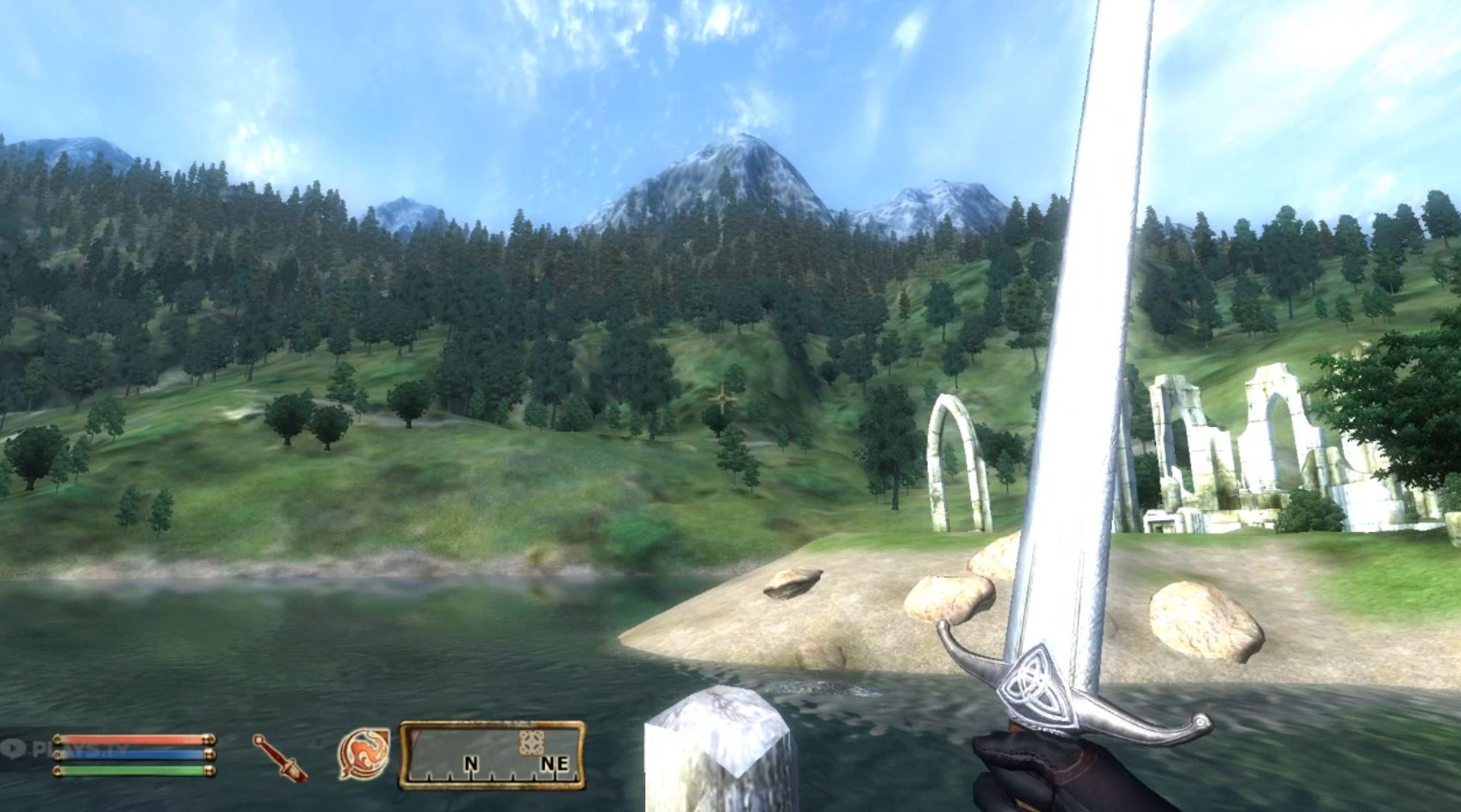
See a GIF demonstrating leaf cards in action here.
Chris ran me through a few techniques used to cram Oblivion’s forests beneath a hard and fast memory ceiling, the most interesting and familiar of which mirrors the horror trope of haunted portraits with eyes that follow the viewer at every angle—but leaves.
“That game is so old that it used what's called a leaf card technique,” Chris says, “Meaning that the leaf category and the leaf cloud was composed of these little billboards that would turn to face the camera.”
“The only problem was that we'd never sold middleware,” says King. “We had no idea how it should be priced. Amazingly, Todd helped us determine what we both agreed was a fair price and then and there he became our first games client.”
King continues as I imagine an ambling Linklater-directed montage, Howard, King, and Sechrest huddled over a pile of paperwork and tree textures, pinning them to the wall and nodding as revelations dawn one after the other. Emails and phone calls don’t make for a good montage.
“Fast forward to March 2006. Oblivion is released for the Xbox 360. It was a monster hit and the SpeedTree logo appeared on the back of the box,” says Chris, “The perception was that SpeedTree may not be efficient enough to run effectively on a 360 or PS3. Because Oblivion demonstrated in grand fashion that SpeedTree was ready for primetime on any platform, it's probably the single most important title we've ever been a part of. We will always be grateful to Todd.”
At the time, an open world game at Oblivion’s scale running on a console was unheard of. And while the final Xbox 360 version is widely considered a buggy, nearly unplayable mess, SpeedTree demonstrated that it could manage to render trees on 16 square miles of land on hardware that predated even the most average of gaming PCs in 2006. It worked, and that was enough to draw industry-wide attention to SpeedTree.
The exchange went both ways, too. Would Oblivion have captured imaginations like it did with boring and repetitive forests? It doesn’t look great by today’s standards, but at the time, streaming in diverse stretches of vegetation on the relatively meager Xbox 360 specs was a technical breakthrough, proving that open world games could work on lesser hardware at a high fidelity. It set a trend and games with even denser forests followed suit, evidenced by games like The Witcher 3, which would look very different (or wouldn’t exist at all) if not for SpeedTree.
Branching out
A snippet from White House Down featuring SpeedTree.
By today’s metrics, Oblivion is an old game. Now we get thousands of new games every year, a good chunk of which use SpeedTree, and some of which want a little more than a procedural tree tool. What about modeling the life of a tree? When I ask King whether simulation of arboreal biology is a priority for them, I’m told no in the best way possible: an extended anecdote from the left-est of fields.
Shit, we'll make it 8,000 feet high, we don't care. It makes no difference to us, we're not bound by these botanical rules. What do you want it to be? Do you want it to be White-House-shaped?
Chris King
“One of our competitors was based in Europe, and the US Secret Service, believe it or not, is a customer of ours, and they put together simulations of the White House grounds, or at-least they were talking to us about it.”
It turns out that spending resources on creating systems that consider the laws of nature would only sequester SpeedTree to an even smaller niche.
“So they call the European people and told them what the problem was and they said, ‘Well, our stuff is botanically accurate and Southern Magnolia's don't grow 80 feet high, so our software won't do that.’ King gets a little louder, “And they called us and we were like, ‘Shit, we'll make it 8,000 feet high, we don't care. It makes no difference to us, we're not bound by these botanical rules. What do you want it to be? Do you want it to be White-House-shaped? We can do that as well.’”
The Secret Service weren’t even the first clients to request similar detailed models of the White House lawn. King says it’s requested so often that it’s become a running gag in the company. The amount of games and movies that feature it as a setting is surprisingly high, and the request for technology that can emulate the nearby vegetation is in equal demand. Filming there is prohibited, and so the the more often SpeedTree becomes a requested tool, the easier it is for future film crews to turn to them.




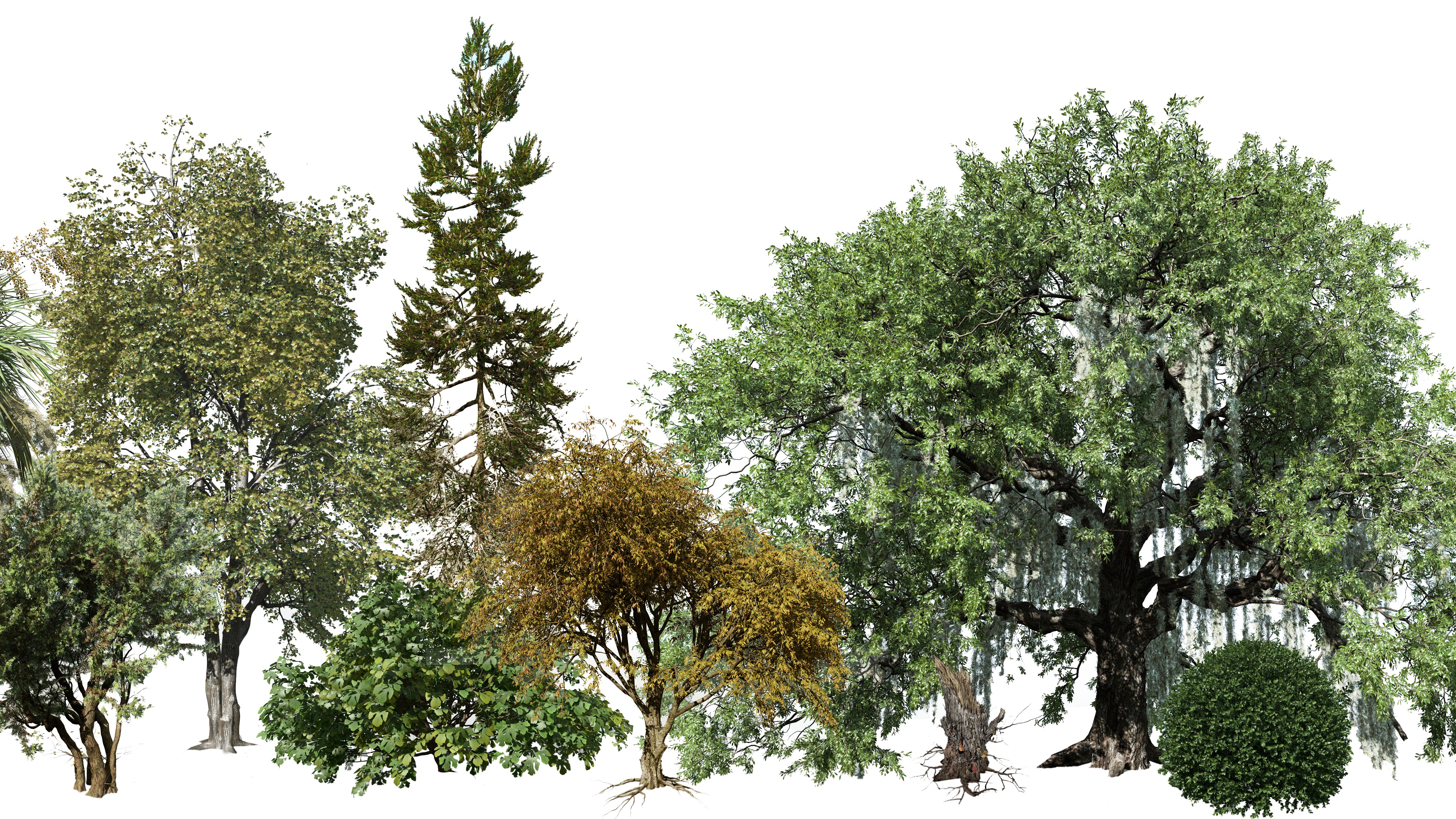

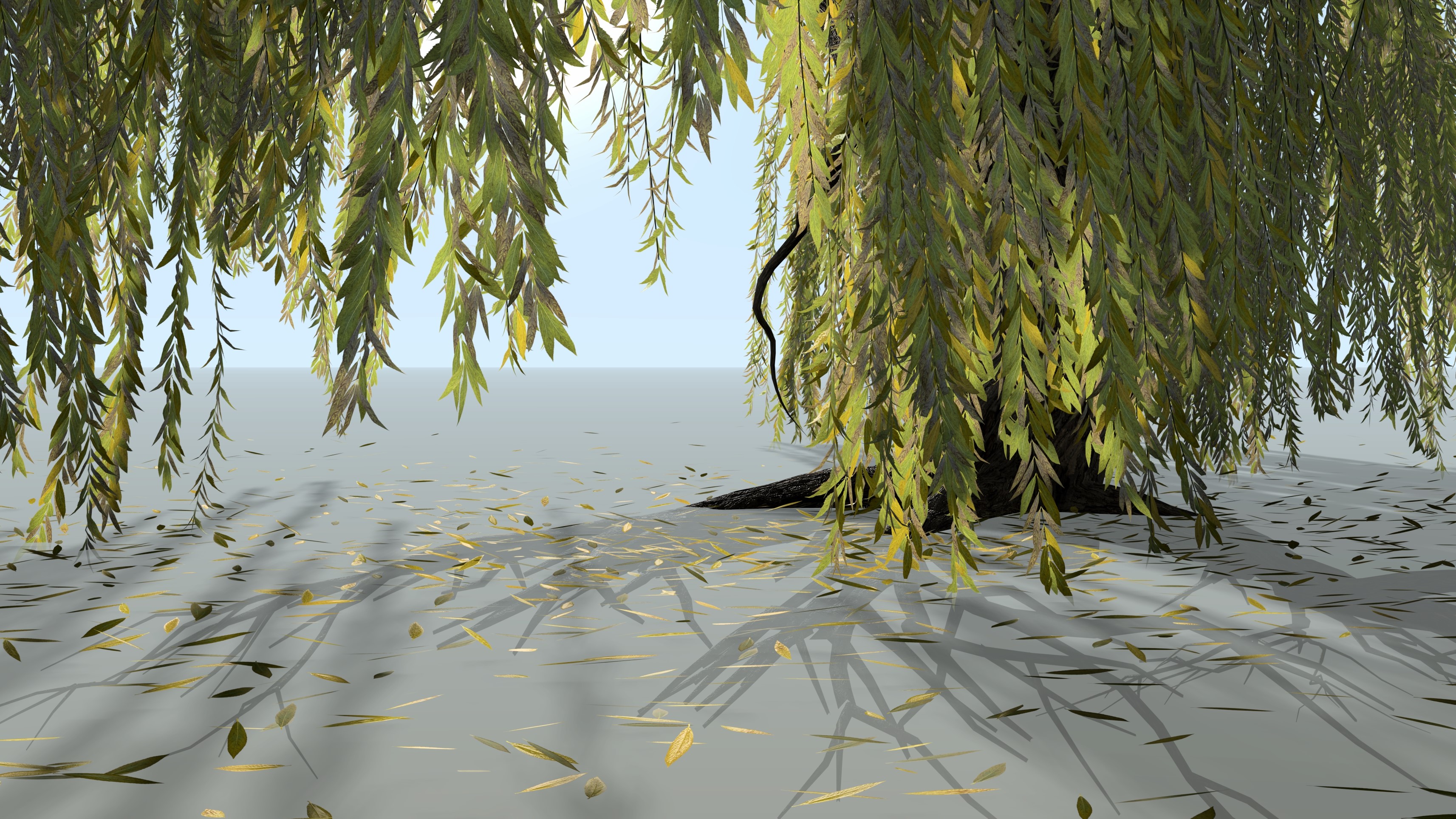

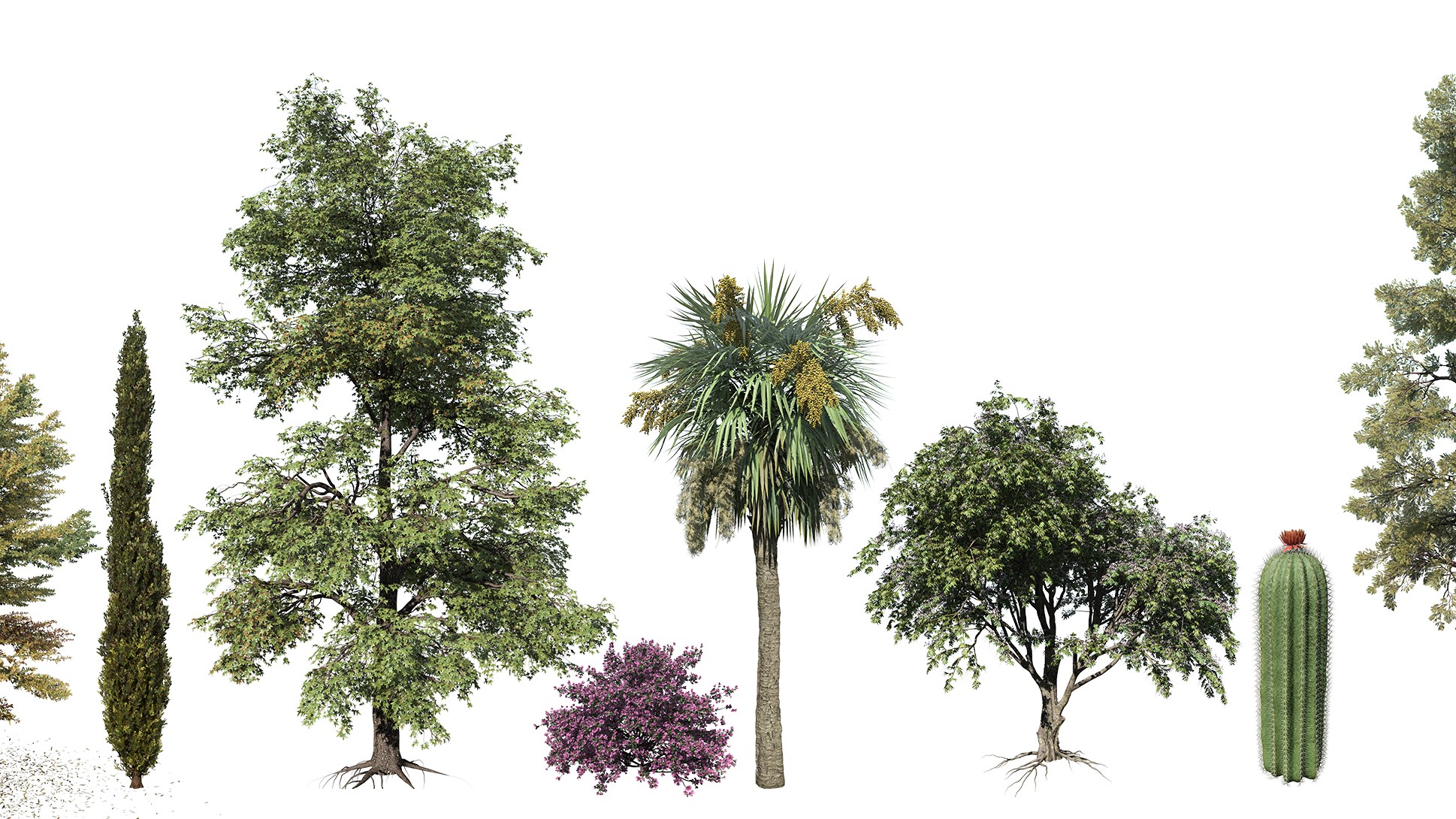
From Oblivion to the Secret Service, SpeedTree has since branched out into generating vegetation in general. King and his cohorts are also currently prepping the full release of SpeedTree 8, which is a big leap forward in physically based rendering (PBR) tech, and showcases their new material scanning hardware and software used for an ever-growing database of megatextures and models. To create such a deep library, King even employed a specialist whose job is to literally scan as many plants as possible. Imagine that, strolling about the planet looking for pretty plants to immortalize every day. Noble.
Prior to placement in a game or film and removed from the discerning touch of an artist, the trees and shrubs and cacti look serene, eerie. They’re nature’s aesthetic devoid of context, cleaner and healthier than any plant will ever be, the Stepford wives of common ferns. They look real, and to someone looking up at the prominence of a potential mountain of work creating their own assets, SpeedTree’s prices are a much more appealing alternative. Still, as useful and seemingly advanced as SpeedTree’s tech might seem to developers, it has plenty of room to grow.
“You could say we're currently near the center of the spectrum of digital fidelity in tree models. We look good from the distance players typically view trees in a game situation—on or near the ground and maybe 10 to 100 feet away.” says King, “So, in ten years, hopefully we'll be zooming from space to a vein on a leaf seamlessly!” With more games like Star Citizen and Dual Universe looking for the same scale and adaptability, King knows they have their work cut out for them.
SpeedTree was even used in the 2015 Oscar Winner for Best Picture, Spotlight.
In the meantime, with every wave of new games, we get a firsthand look at how it’s changing. King can’t disclose everywhere you’ll see SpeedTree used next, but Destiny 2, like the original, will make use of SpeedTree. He also tells me that Industrial Light and Magic has more or less standardized SpeedTree, and that barring any breakthroughs in vegetation generation it’ll be used in most of the upcoming Star Wars films.
Ubisoft also brokered a deal with SpeedTree in 2016, agreeing to use it as their standard vegetation modeling tool. Given the size of Assassin’s Creed: Origins’ map, SpeedTree makes perfect sense. Since Avatar, SpeedTree has been used in nearly 100 films and well over 1,000 games, making it the industry standard. It's everywhere.
Rogue One’s beachside battle on Scarif, arguably the series’ best battle ever, used SpeedTree. Whenever you slap a new player into a tree in Absolver or make a hasty getaway through the forest from an irate honey badger in Far Cry 4, SpeedTree is there. So the next time you take cover behind a big hardwood in PUBG, remember who generated its bulletproof bark, and in turn, set the table for this chicken dinner and many more to come.
James is stuck in an endless loop, playing the Dark Souls games on repeat until Elden Ring and Silksong set him free. He's a truffle pig for indie horror and weird FPS games too, seeking out games that actively hurt to play. Otherwise he's wandering Austin, identifying mushrooms and doodling grackles.


